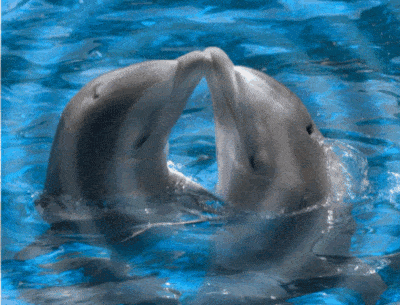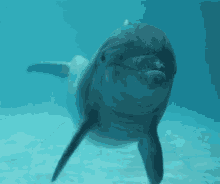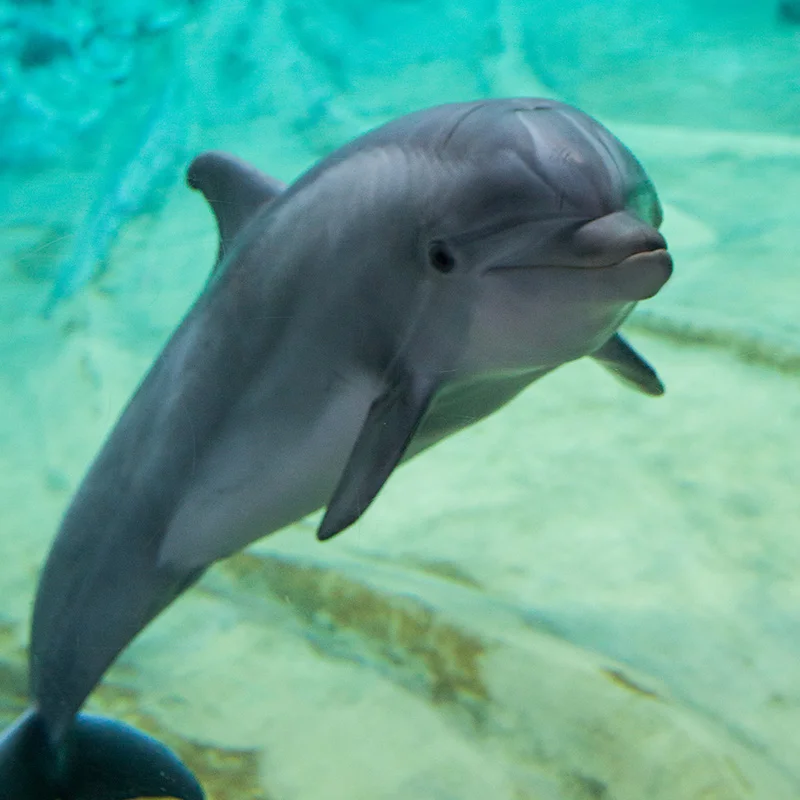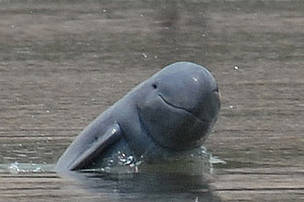



Dolphins spawn naturally and live all around the in the worlds ocean and seas. including the Atlantic, Pacific, Indian and Mediterranean. They inhabit different bodies of water such as harbors, bays, gulf, estuaries, and far deeper waters away from shore.
Socially dolphins are chill animals, living together in so-called "pods" that can range in size from around 2-30 individuals. They can chat with each other in "dolphintongue" (uncommon name), which consists of a series of clicks, whistles, and other vocalizations.
Because of their above-average intelligence, dolphins have exhibited playful social behaviors such as tossing seaweed amongst each other, carrying objects around, chasing one another, and toying about with fish (usually involving the premature death of said fish).
Dolphins have what some have referred to as "the cutest animal ever" and "really flippin' (pun intended) awesome looking!". Generally dolphins are a light gray color, but some are black and white, and a rare few are even pink! The dorsal fin reaches up high and has a concave hind edge.
In terms of proportions, adult dolphins can get very large and heavy! The average adult length of the common bottlenose dolphin is 7-9 feet, and their average weight is 500-600 pounds! What a big dolphin! But, when taking the evil dolphin variant into account, otherwise known as the orca, this size is dwarfed by the evil dolphin's ability to grow up to up to 30 feet in length!

There are a lot of freaking dolphins out there. The global population of the common dolphin is estimated at about six million! In the North Atlantic alone there are around 640,000, which is incidentally about the worldwide population of bottlenose dolphins, such as the one pictured below.

Despite all these dolphins, some subspecies and populations have numbers that make them endangered dolphins! To prevent these subspecies from dying out, scientists and local communities work hard to see that threats like habitat loss and illegal gillnet fishing techniques are prevented, and the dolphins are perserved. An example of a threatened subspecies and the attempt to save it is the Mekong Irrawaddy Dolphin (pictured below), which while endangered, recently went up in population for the first time on record. Yippee!!!!!

| Year| | 1997 | | 2005 | | 2007 | | 2010 | | 2015 | | 2017 | |
|---|---|---|---|---|---|---|
| Pop.| | 200 | | 127 | | 93 | | 85 | | 80 | | 92 | |
.-" l
.' /
_.------------' :
.-""" "-.
.' "-.
_.-' __ "-.
(---""" " _ "-.
""""""""-----.-"" `. `.
\ `.__;________ `.
`.: """"---... `.
` """--.. \--""-.
: `. :
\ .-"
"-._l